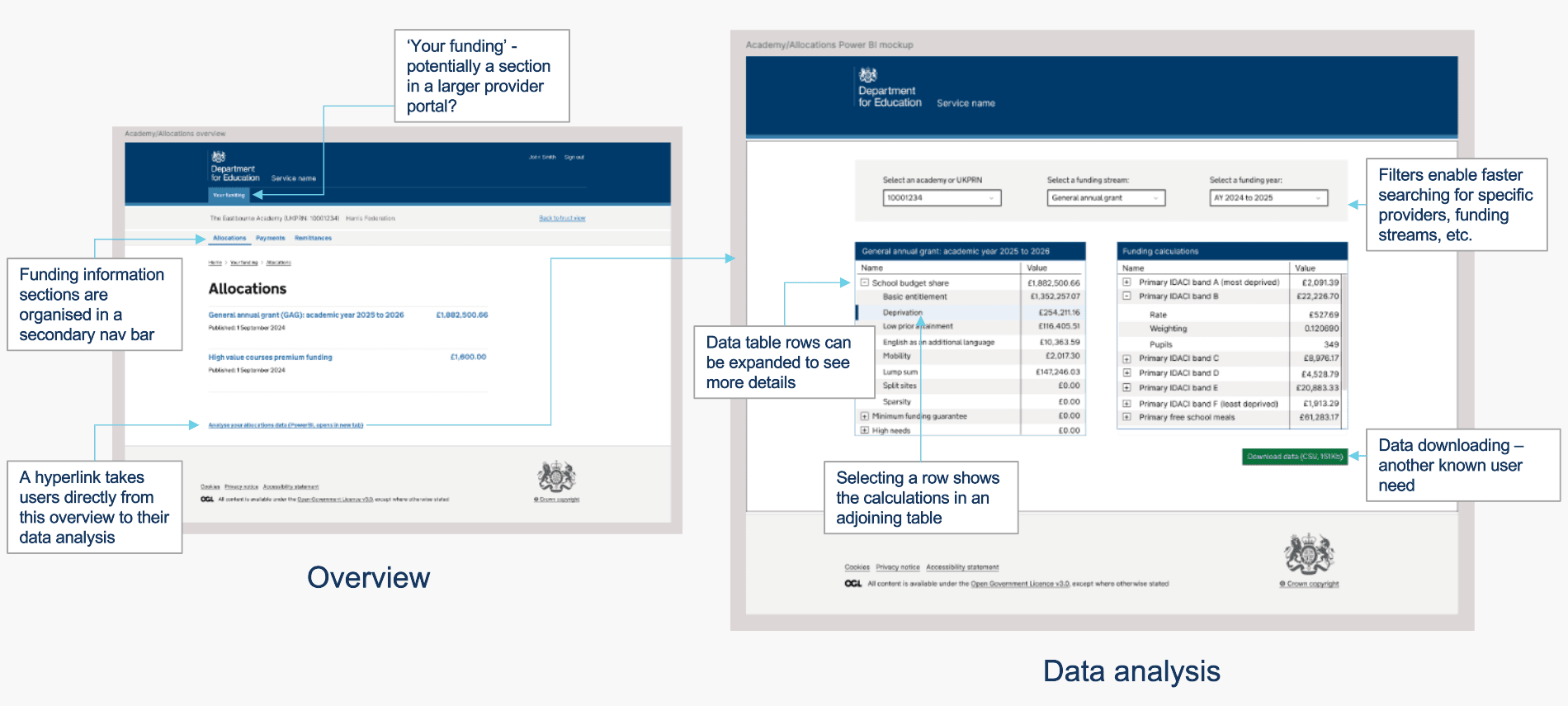Starting points
This alpha is a continuation and refocusing of the work done by earlier discovery and alpha teams. The design histories for some of this work can be found in the Communicating allocations discovery section.
Towards the end of their project, the previous alpha team were asked to explore ways of reducing the complexity of producing funding statements, by using a data-driven approach and templates to automate production.
The team produced a lo-fidelity prototype using Figma and Power BI which provided an early proof of concept. Unfortunately they ran out of time to develop it further and test it with users.
The ‘ask’
Once the core UCD team for this alpha was in place, the senior management team (SMT) for the funding service delivery programme asked them to:
- visualise what providers’ funding information might look like if we brought together their allocation statements, payment profiles and remittance advices
- continue exploring the feasibility of using data-driven automation to dynamically generate providers’ funding information, to reduce the need for expensive developer input
- do this while continuing to give providers access to funding calculations, and meeting other known user needs
An early sketch
To confirm their understanding with SMT and explain the ‘ask’ to newer team members, the core design team produced a rough sketch in Figma, showing how a data-driven approach might look.
 Annotations describe some of the mocked up functionality in an early sketch.
Annotations describe some of the mocked up functionality in an early sketch.
This was purely exploratory and not meant to provide any kind of future design direction. It’s just a flat sketch with no interactive elements, but it did a good job of bringing the problem to life for SMT and the project team.
Preparing for inception
Alongside this, the team also began to pull together contextual information, research findings and summaries of known user needs, for the team inception sessions. We used a mix of remote and face-to-face team sessions to get to know one another, along with focus time to go through the large amount of reading and artefacts produced by earlier teams.
We also began exploratory discussions with product managers and lead developers on the:
- Calculate Funding Service (CFS), which provides data to internal teams that deliver education provider funding
- Manage your Education and Skills Funding (MYESF) service, which makes this data available to education providers
Inception outputs
By the end of inception, we agreed to focus on adult funding for this alpha and arrived at six testable hypotheses.
We believe that:
- the communication of funding statements, payments and remittance data can be driven by data
- the data from CFS is in the correct format to be understood by users in its current form
- information provided through CFS and other data repositories meets all the user needs for communicating adult allocations, payments and remittances
- parts of a data-driven funding statement will be conditional based on the CFS data and requirements for specific grants to be valuable to the user
- a data-driven funding statement can be scalable, regardless of its complexity
- the reduced effort to produce a consolidated adult funding statement will make it easier, more efficient and cost-effective than alternatives.

